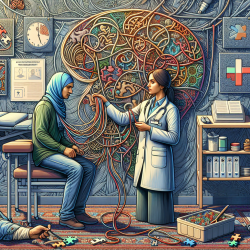Introduction
High Dose Rate (HDR) brachytherapy is a cutting-edge therapeutic technique that has transformed the field of radiation therapy. The American Association of Physicists in Medicine (AAPM) recently published a comprehensive guideline titled AAPM Medical Physics Practice Guideline 13.a: HDR Brachytherapy, Part A. This guideline provides crucial insights into the infrastructure and program design necessary for implementing an HDR brachytherapy program. In this blog, we will explore how practitioners can leverage these guidelines to enhance their clinical practice, ensure regulatory compliance, and ultimately improve patient outcomes.
Understanding the Guidelines
The AAPM guideline emphasizes the importance of a robust infrastructure for HDR brachytherapy. It provides a framework for setting up a program that meets the minimum standards for quality assurance (QA) and regulatory compliance. The guideline is divided into two parts: Part A focuses on the infrastructure and program design, while Part B (to be released later) will cover clinical treatment processes, including imaging, planning, and treatment delivery.
Key Takeaways for Practitioners
- Infrastructure and Program Design: The guideline outlines the essential components of an HDR brachytherapy program, including the design of treatment vaults, imaging resources, and patient management systems. Practitioners should ensure that their facilities are equipped with the necessary infrastructure to support HDR treatments.
- Regulatory Compliance: The guideline provides detailed information on regulatory requirements, including radioactive material licensing, personnel monitoring, and security measures. Practitioners must familiarize themselves with these regulations to ensure compliance and avoid potential legal issues.
- Quality Assurance: A robust QA program is crucial for the safe and effective delivery of HDR brachytherapy. The guideline outlines the minimum QA tests required for treatment delivery systems, including source strength measurement, source positioning accuracy, and timer accuracy. Practitioners should implement these QA measures to maintain high standards of patient care.
Encouraging Further Research
While the AAPM guideline provides a solid foundation for HDR brachytherapy, it also highlights the need for ongoing research and development. Practitioners are encouraged to stay abreast of the latest advancements in the field and contribute to research efforts aimed at improving treatment efficacy and safety. Collaboration with professional societies and participation in clinical trials can provide valuable insights and drive innovation in HDR brachytherapy.
Conclusion
The AAPM's AAPM Medical Physics Practice Guideline 13.a: HDR Brachytherapy, Part A is an invaluable resource for practitioners seeking to enhance their HDR brachytherapy programs. By implementing the recommendations outlined in the guideline, practitioners can improve the quality of their services, ensure regulatory compliance, and ultimately achieve better patient outcomes. To read the original research paper, please follow this link: AAPM medical physics practice guideline 13.a: HDR brachytherapy, part A.










